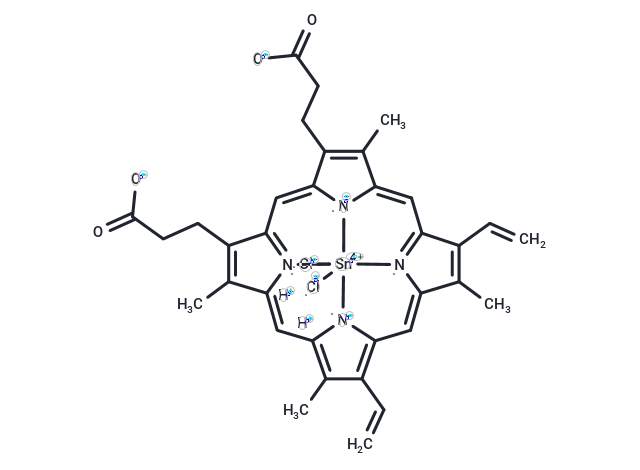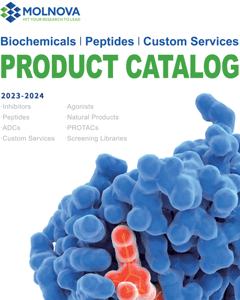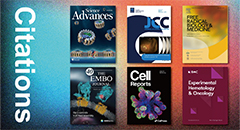
Tin-protoporphyrin IX dichloride
CAS No. 14325-05-4
Tin-protoporphyrin IX dichloride( —— )
Catalog No. M33151 CAS No. 14325-05-4
Tin-protoporphyrin IX dichloride (SnPPIX dichloride) is an HO-1) inhibitor with antiviral activity that inhibits dengue and yellow fever viruses.
Purity : >98% (HPLC)
 COA
COA
 Datasheet
Datasheet
 HNMR
HNMR
 HPLC
HPLC
 MSDS
MSDS
 Handing Instructions
Handing Instructions
| Size | Price / USD | Stock | Quantity |
| 2MG | 68 | Get Quote |


|
| 5MG | 101 | Get Quote |


|
| 10MG | 163 | Get Quote |


|
| 25MG | 265 | Get Quote |


|
| 50MG | 397 | Get Quote |


|
| 500MG | Get Quote | Get Quote |


|
| 1G | Get Quote | Get Quote |


|
Biological Information
-
Product NameTin-protoporphyrin IX dichloride
-
NoteResearch use only, not for human use.
-
Brief DescriptionTin-protoporphyrin IX dichloride (SnPPIX dichloride) is an HO-1) inhibitor with antiviral activity that inhibits dengue and yellow fever viruses.
-
DescriptionTin protoporphyrin IX dichloride (SnPPIX) is a potent Heme oxygenase-1 (HO-1) inhibitor. Tin protoporphyrin IX dichloride sensitizes pancreatic ductal adenocarcinoma (PDAC) tumors to chemotherapy in mice model.
-
In VitroTin protoporphyrin IX dichloride (20 μM, 50 μM; 24 hours) significantly suppressed the proliferation of Capan-1 and CD18/HPAF cells. In contrast, Tin protoporphyrin IX dichloride has no significant effect on PDAC cells proliferation at all exposures except at 50 μM.Cell Viability Assay Cell Line:Capan-1, CD18/HPAF, PDAC cells Concentration:20 μM, 50 μM Incubation Time:24 or 72 hours Result:Inhibited Capan-1 and CD18/HPAF cells proliferation and inhibits PDAC cells growth at 50μM.
-
In VivoTin protoporphyrin IX dichloride (intraperitoneal injection; 5 mg/kg; at 0, 7, 15, and 20 days) alone or combines with Gemcitabine significantly reduced the weight of pancreatic tumors (P < 0.05), decreases metastasis and improved the efficacy of Gemcitabine treatment.Animal Model:Male and female athymic nude mice with PDAC cell-derived xenograft tumorsDosage:5 mg/kg Administration: Intraperitoneal injection; at days 1, 4, 6, 8, 11, 13, 15, 18, and 20 Result:Inhibited tumor growth and sensitized tumors to chemotherapy (Gemcitabine).
-
Synonyms——
-
PathwayAutophagy
-
TargetAutophagy
-
RecptorAutophagy | Virus Protease
-
Research Area——
-
Indication——
Chemical Information
-
CAS Number14325-05-4
-
Formula Weight750.26
-
Molecular FormulaC34H32Cl2N4O4Sn
-
Purity>98% (HPLC)
-
SolubilityIn Vitro:?0.1 M NaOH : 14.29 mg/mL (19.05 mM; Ultrasonic; (NaOH,pH≈11))1M NaOH : 5 mg/mL (6.66 mM; Ultrasonic)DMF : 1 mg/mL (1.33 mM) DMSO : 0.5 mg/mL (0.67 mM)
-
SMILESO=C(CCC1=C(C)C2=CC3=C(C)C(C=C)=C4C=C5C(C)=C(C=C)C6=[N]5[Sn+4]([Cl-])([Cl-])([N-]43)([N-]78)[N]2=C1C=C8C(CCC([O-])=O)=C(C)C7=C6)[O-].[H+].[H+]
-
Chemical Name——
Shipping & Storage Information
-
Storage(-20℃)
-
ShippingWith Ice Pack
-
Stability≥ 2 years
Reference
1. Abdalla MY,et al.Enhancing responsiveness of pancreatic cancer cells to gemcitabine treatment under hypoxia by heme oxygenase-1 inhibition.Transl Res. 2019 May;207:56-69.?
molnova catalog



related products
-
Thonzonium Bromide
Thonzonium bromide is a monocationic detergent.
-
740 Y-P
740 Y-P is a potent and cell-permeable activator of PI3K.
-
Ginkgolide K
Ginkgolide K induces protective autophagy through the AMPK/mTOR/ULK1 signalling pathway. It possesses neuroprotective activity.



 Cart
Cart
 sales@molnova.com
sales@molnova.com


